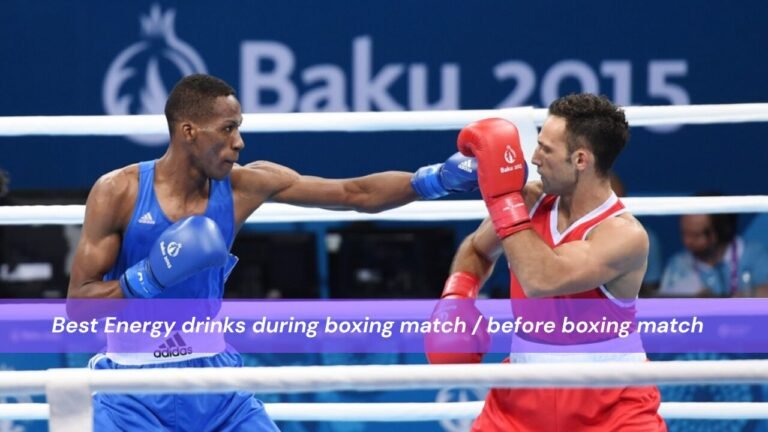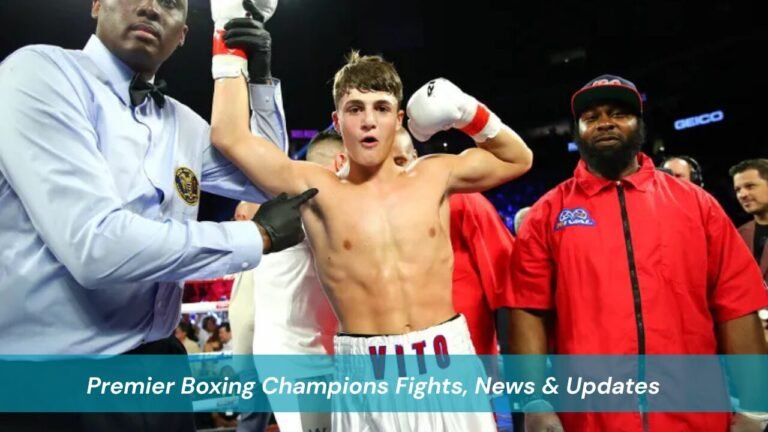In a matchup that captured global attention and polarized fans across generations, Jake Paul vs. Mike Tyson emerged as one of the most intriguing events in boxing history. Scheduled initially for July 2024 but postponed due to medical reasons, the fight finally took place on November 15, 2024, at the iconic AT&T Stadium in Arlington, Texas. The bout was broadcast live on Netflix, symbolizing a major shift in how combat sports are consumed.
Blending entertainment, celebrity influence, and raw athleticism, this showdown between a social media star-turned-boxer and a legendary heavyweight champion became a pop culture moment. But beyond the spectacle, what did the fight really represent? Let’s dive into the facts, context, and aftermath of Jake Paul vs. Mike Tyson.
The Fighters Backgrounds and Boxing Journeys
Jake Paul has reshaped what it means to be a professional boxer in the digital era. Initially dismissed as a novelty act, he has gradually gained credibility by taking on legitimate fighters and training under experienced coaches. His mission? To bring boxing to the younger generation and challenge traditional industry gatekeepers.
\Former UFC champion Michael Bisping said, “Jake Paul’s work ethic and dedication have made him a real contender; he’s not just a YouTuber anymore.” Paul also launched youth training camps and partnered with non-profits to support underprivileged athletes. His dual role as athlete and promoter has earned him both commercial success and scrutiny from boxing purists.
Though retired from professional competition since 2005, Mike Tyson has remained a cultural figure and occasional exhibition fighter. His 2020 exhibition against Roy Jones Jr. demonstrated he still possessed speed and power, albeit not at his prime levels. Historical Perspective:
Tyson’s dominance in the late 80s was likened to “a force of nature” by ESPN analysts at the time. He is widely considered one of the top 10 heavyweights of all time. Beyond boxing, Tyson has found success in podcasting and cannabis entrepreneurship. His podcast, “Hotboxin’ with Mike Tyson,” boasts over 800,000 YouTube subscribers and regularly features A-list guests, showcasing his evolution from fearsome athlete to mainstream personality.
The Lead-Up to the Fight
When Jake Paul announced he’d be facing Mike Tyson, the internet exploded. Critics called it a circus. Supporters praised its innovation. Questions about safety, legitimacy, and age difference dominated headlines. Netflix’s involvement added to the fight’s hype. As a streaming giant stepping into live sports, this was a historic move that could redefine sports media distribution. Medical Review: According to Dr. Jeffrey Fine, a sports medicine specialist at NYU Langone, “Given Tyson’s age, the precautions taken and pre-fight medicals were essential to ensure the safety of both fighters.”
Both fighters engaged in extensive promotional tours across New York, Las Vegas, and London. Tyson emphasized discipline and focus, while Paul promised to shock the world with a calculated performance. Training footage showed Paul engaging in high-altitude training and modern strength conditioning, while Tyson stuck to old-school methods like shadowboxing, bag work, and sprints. Behind-the-scenes documentaries produced by Netflix and MVP Promotions gave fans a closer look at both camps’ preparation and strategy, further fueling anticipation.
Initially scheduled for July, the bout was postponed when Tyson experienced an ulcer flare-up during a flight. Medical tests later cleared him to fight after a few months of recovery. Both camps reaffirmed their commitment to safety and transparency.
Fight Night Recap What Happened in the Ring
Tyson came out strong, showing surprising agility. Paul kept his distance, relying on jabs. As the fight progressed, Paul’s youth and cardio began to shift the momentum. Tyson landed several power shots but showed fatigue.
By rounds six through eight, Paul controlled the pace, and Tyson struggled to close the distance. Tyson’s most dramatic moment came in Round 2 with a sweeping left hook that nearly rocked Paul. However, Paul’s footwork and clinching technique allowed him to avoid serious trouble.
Jake Paul defeated Mike Tyson via unanimous decision. The judges scored the fight 77–75, 78–74, and 77–76. Judges praised Paul’s defense and strategic approach, while acknowledging Tyson’s heart and veteran instincts.
The Aftermath Reactions, Impact, and Legacy
Mixed fan reactions followed the fight. Many applauded Paul’s performance, while others felt the fight lacked drama. Celebrity endorsements came pouring in from Snoop Dogg, Joe Rogan, and LeBron James, who commented on social media. The boxing world remained divided: some purists criticized the event, while others admired its mass appeal. Sports media platforms like Bleacher Report, ESPN, and DAZN featured back-to-back coverage and live breakdowns. The post-fight interviews quickly went viral, with Tyson saying, “I still got it… just maybe not all of it,” prompting applause from the audience.
For Jake Paul, this win solidifies his transition from influencer to serious contender. It opens doors to future bouts with elite-level boxers and demonstrates the power of digital marketing and branding. For Mike Tyson, it reinforces his legend, even in defeat. It demonstrates the risks of intergenerational matchups and highlights how veteran fighters can stay relevant through legacy bouts. For Netflix and promoters, it marked a massive streaming success and a proof of concept for future sports broadcasts, likely leading to more celebrity vs. legacy matchups. Industry Expert Comment: DAZN analyst Chris Mannix stated, “This fight proves that audience reach matters more than a fighter’s pedigree alone. Boxing is becoming as much about content as it is about combat.”
The fight generated over 2.3 million live viewers on Netflix and trended #1 worldwide on Twitter and YouTube. Merchandise sales, including co-branded MVP x Tyson apparel, sold out within 72 hours. Brands like Monster Energy, DraftKings, and Reebok partnered with the event, bringing in over $30 million in sponsorships. Paul’s post-fight NFT collection, launched the next day, raised $4.8 million in 24 hours.
A portion of the proceeds from ticket sales went to mental health charities, including Tyson’s personal foundation. Jake Paul also pledged $500,000 to youth boxing gyms across the U.S., further solidifying his commitment to giving back.
FAQs
What was the official result of Jake Paul vs. Mike Tyson?
Jake Paul won by unanimous decision after 8 competitive rounds.
Was the fight sanctioned as professional or exhibition?
It was sanctioned as a professional fight with official judges and scoring.
How much were the fighters paid?
Jake Paul: Estimated $20 million including PPV share
Mike Tyson: Estimated $15 million
Note: These figures are based on industry estimates and not officially disclosed. Forbes previously reported similar figures for Paul’s fight purses.
How did fans react to the outcome?
While many praised Paul’s strategy and cardio, others felt Tyson deserved more credit. Social media reactions were divided, reflecting the novelty of the matchup.
Will Jake Paul fight again soon?
Most likely. Rumors suggest potential bouts with Tommy Fury (rematch), Nate Diaz, or even a crossover MMA fight with a PFL fighter.
Conclusion
Jake Paul vs. Mike Tyson wasn’t just about who won or lost it was a commentary on the evolution of boxing itself. The merging of entertainment, technology, and sport created a spectacle that will be remembered for years. As boxing continues to evolve, expect more of these hybrid events that bridge generations and platforms. Whether you loved it or hated it, this fight proved one thing: the sport is far from dead, it’s just changing its gloves.




